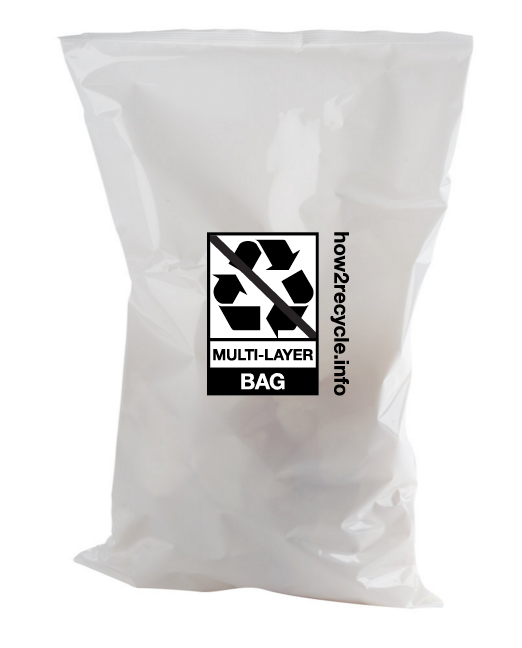There are a number of packages in the marketplace today that bear How2Recycle’s “Not Yet Recycled” message. To many who read that message, it suggests a disconnect between the company’s commitment to sustainable packaging by joining How2Recycle and their packaging decisions. Fortunately, this is usually not the case. A company’s use of a package with limited recyclability can still contribute to their sustainable packaging strategy.
Recyclability is just one part of the sustainability of packaging
To accurately understand the sustainability pros and cons of packaging, it’s necessary to assess what’s called the full life cycle of a package. This means taking into account the environmental and social impacts over every life cycle phase: analyzing everything from how much energy it takes to extract raw materials from the earth, through the greenhouse gas impacts of manufacturing processes, along to how the packaging is transported to stores, and finally what happens at the end of the package’s life – which may consist of disposal, recycling, or some other form of recovery. Recyclability is an important part of sustainability in packaging, but it’s not the only part to consider.
Most packaging that is not recyclable is comprised of a specialized mix of materials. While each material may be recyclable in itself, the mixture of all those materials together may not be. These packages, sometimes called “composite” or “multi-layer”, can have tremendous sustainability advantages everywhere in the life cycle except for end-of-life. For instance, consider potato chip packaging. A typical potato chip bag is made of several different types of plastic laminated together with an ultra-thin layer of aluminum. This package cannot be recycled, but the technology allows the use of an extraordinary lightweight package that can keep out light, air, and moisture, thereby keeping the product safe and fresh.
But if we wanted to prioritize recyclability over all other sustainability considerations, this multi-material package wouldn’t work. Our current recycling system cannot process it. The best bet would be to use packaging made of only one material, not a mix of materials. To get the same performance characteristics though (which carry social and economic advantages, including reduced food waste from spoilage) you’d have to make the whole potato chip container out of aluminum, which does the heavy lifting in the conventional potato chip bag to keep out moisture. By itself, aluminum is too fragile to perform as a flexible bag, so we would have to go with rigid aluminum tins.
We could package potato chips in aluminum tins, and they would be recyclable, but would it be a more environmentally preferable type of potato chip packaging? A comparison of the life cycle impacts of both packages would most certainly see the conventional potato chip bag win out. Compared to a rigid aluminum tin, the production of the composite bag uses substantially less natural resources, it requires less energy and water, results in less greenhouse gas impacts, incurs less transportation impacts, and may actually result in less solid waste.
This last piece may be counterintuitive, but recyclable aluminum potato chip tins could actually result in more landfilled waste. Consider this: if the aluminum tin were to be recycled at the same rate as, say, aluminum beverage cans, then about half of all potato chip tins would be recycled but the other half would end up in the landfill. But since potato chip bags are so lightweight, sending 100% of them to the landfill would still result in less total landfilled waste. It’s a good reminder that “reduce” comes before “recycle” on the waste hierarchy.

We need packaging that can be recycled and used in the manufacture of new products AND we need to reduce our current levels of emissions and resource consumption. The best packages do both, but none do both perfectly. Fortunately, there is a tremendous amount of work underway to change the recyclability of low-impact Not Yet Recycled packaging, and there is also a tremendous amount of work underway to reduce the life cycle impacts of recyclable packaging. So the next time you see a package with our “Not Yet Recycled” message, don’t dismiss it as being unsustainable. It’s not perfect, but its recyclability is not the full story of its life.


